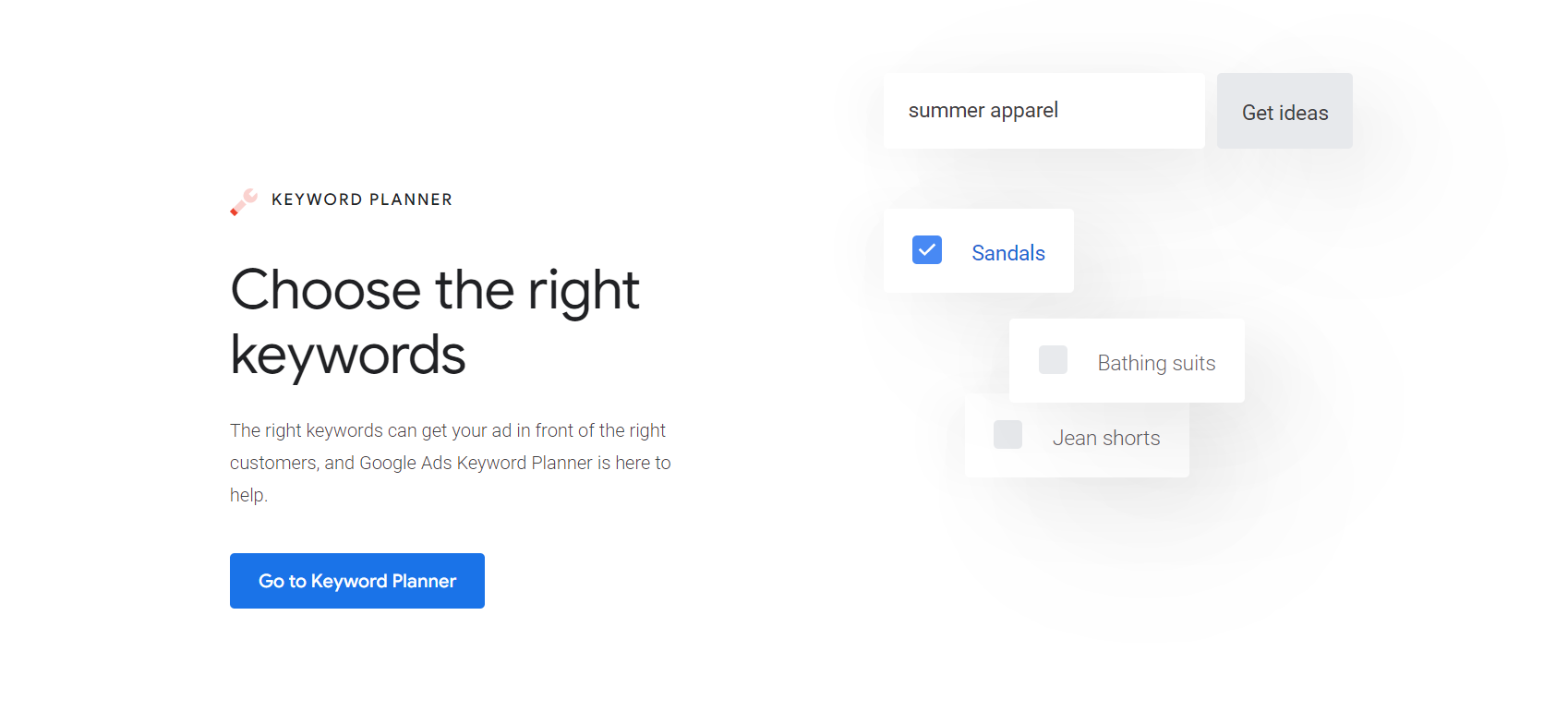What is Keyword Research?
Keyword research is the process of identifying and researching the keywords and phrases that your target audience is searching for, in order to optimize your website and content for search engine rankings.
By understanding which keywords and phrases are relevant to your business and have high search volume, you can optimize your website and content to rank higher in search engine results pages (SERPs) and drive more targeted traffic to your website.
Keyword research tools such as Google Keyword Planner, Ahrefs, and SEMrush can help you identify and analyze keywords and competition.
Why Is Keyword Research Important?
Keyword research is important because it helps you understand the language and phrases that your target audience is using to find products or services like yours online.
With a newfound understanding of these search keywords and phrases, you’ll have the ammo needed to write and optimize keyword-specific content to rank higher in search engine results pages (SERPs) for those terms.
Additionally, keyword research can help you understand what the competition is like for specific search terms, giving you insight that can help you make strategic decisions about which to target and in what order so you don’t waste time, energy, and resources spinning your digital wheels as it were.
Furthermore, by using the right keywords in your content, you can ensure that your website is more discoverable and visible to the RIGHT audience. You know, the ones you want to sell to.
Benefits Of Keyword Research For SEO
There are several benefits of conducting keyword research for SEO, including:
Increased Website Traffic
By identifying and targeting the keywords and phrases that your target audience is searching for, you can optimize your website and content to rank higher in search engine results pages (SERPs), which can lead to increased website traffic and more leads.
Better Targeting
Keyword research allows you to understand the specific language and phrases that your target audience is using to find products or services like yours. This can help you create more targeted and relevant content that speaks directly to your audience.
Improved Search Engine Rankings
By including the right keywords in your website and content, you can improve your search engine rankings and make your website more discoverable to the right audience.
A Better Understanding of The Competition
By analyzing the competition for specific keywords, you can make strategic decisions about which keywords to target and how to optimize your website and content to outrank your competitors.
More Cost-Effective Marketing
When you know the right keywords to target, you can create a more effective and cost-efficient marketing strategy by focusing on the keywords with the highest potential for driving traffic and conversions.
Improved Conversion Rates
By using the right keywords in your website and content, you can help potential customers find your website more easily and increase the likelihood that they will convert into paying customers.
Key Components of How to Do Keyword Research
There are several key elements involved in conducting effective keyword research for SEO, including:
Identifying your Target Audience
Before you can begin researching keywords, it’s important to understand who your target audience is. Consider demographics such as age, location, and interests to determine which keywords and phrases they are likely to search for.
Conducting Initial Research
There are a variety of tools available to help you conduct keyword research, such as Google Keyword Planner, Ahrefs, and SEMrush. These tools will give you an idea of the search volume, competition, and potential traffic for different keywords.
Creating A List of Keywords
As you conduct your research, create a list of keywords and phrases that are relevant to your business and that your target audience is likely to search for. Be sure to include both short-tail and long-tail keywords on your list.
Analyzing The Competition
Look at the websites that are currently ranking for the keywords on your list and consider factors such as domain authority, page authority, content quality, and backlinks to understand what you’re up against.
Optimizing Your Website and Content
With your list of keywords and an understanding of the competition, you can now optimize your website and content for SEO. Be sure to include your keywords in your content, but avoid keyword stuffing.
Tracking Your Results
Use tools such as Google Analytics and SEMrush to track your website’s traffic and search engine rankings over time. This will help you identify areas where you need to make changes and see the impact of your optimization efforts.
Keyword Research Steps
Make a list of important, relevant topics based on what you know about your business

The first step in conducting keyword research is to make a list of important, relevant topics based on what you know about your business. This step is all about identifying the core themes and topics that are most relevant to your business and that your target audience is likely to search for. The goal is to come up with a list of broad, overarching topics that you can then use to guide your research and optimization efforts.
One way to start this step is to brainstorm a list of keywords and phrases that are related to your business. Think about the products or services you offer, the industry you’re in, and the problems your customers are trying to solve. Also, consider your business’s Unique Selling Points (USP) and what sets you apart from competitors.
Another approach is to look at your competitors’ websites and see what keywords and topics they are focusing on. This can give you an idea of what is already working in your industry and can help you identify gaps in the market that you can fill with your own content and optimization efforts.
It’s also important to research keywords and phrases that are not just relevant but also have search volume and low competition, so your content can have a chance to rank well in search engine results.
Once you’ve compiled a list of relevant topics, you can move on to the next step of researching specific keywords and phrases within those topics to optimize your content and website for SEO.
How to Conduct Keyword Research In SEO
Step 1: Identify Your Target Audience
Before you can begin researching keywords, you need to know who your target audience is. Think about the demographics of your ideal customer, including their age, location, and interests. This information will help you determine which keywords and phrases they are likely to search for.
Step 2: List out Relevant or Important Topics Related to Your Business, Industry, and/or Customers
Make a list of important, relevant topics based on what you know about your business. This step involves identifying the core themes and topics that are most relevant to your business and that you want to target with your SEO efforts. These topics should be based on the products, services, or information that your business offers and should align with the interests and needs of your target audience.
To create this list, you can start by thinking about the main categories or sections of your website, and what type of content you have on your website. This could include things like your services, products, and blog content. You can also consider the industry or niche that your business operates in and what common questions or problems your target audience may have.
Need more ideas? You can use brainstorming techniques such as mind mapping, listing, or clustering. You can also use tools such as Google Trends, Google Keyword Planner, and customer feedback to get a better understanding of what topics are most relevant and in demand among your target audience.
Once you have your list, you can start to refine it by eliminating any irrelevant or duplicate topics, and prioritizing the most important and relevant ones. This list will serve as a starting point for your keyword research and will help you to identify the best keywords to target for your website.
Step 3: Fill In Topic Buckets With Keywords
Fill in the topic buckets you created in step 2 with specific keywords and phrases. This step involves identifying the specific terms and phrases that your target audience is using to find products or services like yours. This is where you will use keyword research tools such as Google Keyword Planner, Ahrefs, and SEMrush to get a sense of the search volume, competition, and potential traffic for different keywords.
To begin this step, take the broad topics you identified in step 1 and use them to guide your research. For each topic, try to come up with a list of keywords and phrases that are related to that topic. Keep in mind that you should include both short-tail and long-tail keywords on your list. Short-tail keywords are typically one or two words and are highly competitive, while long-tail keywords are longer phrases and have less competition.
As you conduct your research, you may want to consider the following factors:
• Search volume: How many people are searching for the keyword each month?
• Competition: How difficult it is to rank for the keyword?
• Relevance: Is the keyword relevant to your business and target audience?
• Intent: What is the intent behind the search? Is the user looking for information, to buy a product or service, or to compare different options?
Once you’ve compiled a list of relevant keywords and phrases, you can move on to the next step of analyzing the competition and optimizing your website and content for SEO.
Step 4: Understand How Intent Affects Keyword Research and Analyze Accordingly
Understand how intent affects keyword research and analyze accordingly. This step is all about understanding the intent behind the keywords and phrases that you’ve identified in step 2 and using that understanding to inform your optimization efforts.
Intent refers to the purpose or goal behind a user’s search query. It can be informational, navigational, transactional, or commercial research. Understanding the intent behind a user’s search query can help you create content that is more relevant and useful to them, which can ultimately lead to higher rankings and more conversions.
For example, if a user is searching for “best running shoes,” they likely have a transactional intent, meaning they are looking to purchase a product. In contrast, if a user is searching for “how to start running,” they likely have an informational intent, meaning they are looking for information and guidance.
When analyzing keywords and phrases, it is important to take into account the user’s intent and group them accordingly. Once you understand the intent behind a keyword or phrase, you can create content that is tailored to that intent.
For example, if a user is searching for a product, you can create a product page that includes detailed information about the features, specifications, and benefits of your product. If a user is searching for information, you can create a blog post that provides valuable insights and advice on the topic.
By understanding the intent behind your keywords and creating content that is tailored to that intent, you can improve the relevance and usefulness of your content, which can ultimately lead to higher rankings and more conversions.
Step 5: Research related search terms
This step involves researching related search terms that may be relevant to the main keyword or topic being researched. This step can include using tools such as Google’s related search feature, or using keyword research tools to identify similar or related keywords that have a high search volume or relevance to the main keyword. This step can also include looking at the keywords that competitors are targeting and analyzing the language and terminology used in related content. The goal of this step is to identify additional keywords that can be used to optimize content and improve search visibility.
Step 6: Use keyword research tools to your advantage
These tools can help to identify high-performing keywords, analyze search volume and competition, and track keyword rankings over time. Some popular keyword research tools include Google Keyword Planner, SEMrush, Ahrefs, and Moz Keyword Explorer.
These tools can also help to identify long-tail keywords, which are more specific and targeted phrases that can be used to improve search visibility and drive targeted traffic to a website.
Additionally, it can show you the cost per click and the search volume of keywords, so you can have a better understanding of how much you need to invest. It’s important to note that the results from different keyword research tools may vary, so it’s a good idea to use multiple tools to get a well-rounded understanding of the keywords you’re researching.

How to Find and Choose Keywords for Your Website
Step 1: Use Google Keyword Planner to cut down your keyword list
One of the best ways to get started with keyword research is to use Google’s own keyword research tool, the Keyword Planner. This tool allows you to enter a keyword or phrase and see related keywords, as well as data on search volume, CPC, and competition. Use this tool to start creating a list of keywords related to your industry or niche. By using this tool, you’ll get a better idea of what keywords are most commonly searched for, and which ones are most relevant to your business.
Step 2: Prioritize low-hanging fruit
After you have a list of keywords, it’s important to prioritize the ones that are most likely to drive traffic to your website. These keywords are known as “low-hanging fruit” and are typically those with a high search volume and low competition. These keywords will be easier to rank for and will likely drive more traffic to your website in the short term.
Step 3: Check the monthly search volume (MSV) for keywords you’ve chosen
Knowing the monthly search volume for a keyword is important as it will give you an idea of how many people are searching for that specific keyword. High-volume keywords are typically more competitive, but they also have the potential to drive a lot of traffic to your website. Low-volume keywords may be easier to rank for, but they may not drive as much traffic.
Step 4: Factor in SERP features as you choose keywords
Search Engine Results Page (SERP) features like featured snippets, knowledge panels, and local packs can affect the visibility of your website on search engine results pages. Make sure to take these features into account when choosing keywords as they can impact the visibility of your website.
Step 5: Check for a mix of head terms and long-tail keywords in each bucket
Head terms are broad keywords that are typically one or two words long, while long-tail keywords are more specific, usually three or more words long. A good keyword strategy will include a mix of both head terms and long-tail keywords. Head terms will typically have a higher search volume, but they will also be more competitive. Long-tail keywords, on the other hand, will have a lower search volume but will also be less competitive.
Step 6: See how competitors are ranking for these keywords
Finally, it’s important to see how your competitors are ranking for the keywords you’ve chosen. This will give you an idea of the level of competition you’ll be facing and help you to identify areas where you can improve your own search visibility. Use tools like Ahrefs, SEMrush, or Moz Keyword Explorer to see where your competitors are ranking and what keywords they are targeting.
Frequently Asked Questions – How to Do Keyword Research?
What is keyword research in the context of SEO?
Find out what people in your target market type into search engines to find goods and services like yours by conducting keyword research. Improving your website’s search engine rankings relies heavily on optimising its content.
Why is keyword research important for SEO?
Understanding the language of your target audience through keyword research allows you to enhance your content’s visibility in search engines. More relevant visitors will find your site if it appears higher in search results.
What tools can I use for keyword research?
Google’s Keyword Planner, Ahrefs, and SEMrush are just a few of the many keyword research tools available. With the data provided by these instruments, you can determine which keywords are useful, how popular they are, and how tough the competition is.
How does keyword research impact content creation?
You can tailor your content to the needs of your intended audience by conducting keyword research and using those terms in your writing. As a result, more people will be able to find and read your material.
What are long-tail keywords?
Search terms that are both longer and more specific are known as long-tail keywords. There is less competition for these terms, and they may result in more qualified visitors to your site.
How does keyword research benefit my SEO efforts?
Increased website traffic, more precise targeting, higher search engine ranks, a deeper understanding of the competition, more efficient marketing, and higher conversion rates are just few of the many benefits of conducting keyword research.
What are some key components of effective keyword research?
In order to perform effective keyword research, you must first determine your audience, then use tools to conduct preliminary research, then generate a list of relevant keywords, then analyse the competition, then optimise your website and content, and last monitor your results.
How do I analyze the competition for keywords?
Checking the top 10 results for your targeted keywords will give you a good idea of how the competition is shaping out. You may learn a lot about your competitors’ strengths and weaknesses by analysing metrics like domain authority, content quality, and backlinks.
What’s the role of user intent in keyword research?
What a user has in mind when conducting a search is known as “user intent.” Taking user intent into account when selecting keywords is critical for producing relevant content that can increase your site’s search engine rankings and lead to more conversions.
How do I find a balance between short-tail and long-tail keywords?
There are benefits to using both long-tail and short-tail keywords. The competition for short-tail keywords is stronger, but they receive more searches overall. More targeted and less competitive visitors can be attracted using long-tail keywords because of their specificity.
How can I track the results of my keyword optimization efforts?
You can monitor your site’s traffic and search engine rankings over time with the use of tools like Google Analytics and SEMrush. This allows you to evaluate how effectively you are optimising.
Is keyword research a one-time process?
Researching keywords isn’t a one-and-done deal at all. Keeping up with shifting user preferences and search patterns requires constant re-evaluation and revision of your keyword approach.
Can I do keyword research without using any tools?
Even though keyword research tools are helpful, you can get a head start by just thinking of keywords that are pertinent to your company, products, and services. However, information and precision will improve with the use of tools.
How can I prioritize keywords for my content?
Even though keyword research tools are helpful, you can get a head start by just thinking of keywords that are pertinent to your company, products, and services. However, information and precision will improve with the use of tools.
How does understanding my target audience help with keyword research?
To increase the likelihood of attracting qualified visitors, it is important to have a firm grasp of the demographics, interests, and needs of your target audience.
Track Your Results
Finally, it’s important to track your results to see how your SEO efforts are impacting your search engine rankings. Use tools such as Google Analytics and SEMrush to track your website’s traffic and search engine rankings over time. This will help you identify areas where you need to make changes and see the impact of your optimization efforts.
In conclusion, keyword research is an essential step in the SEO process. By understanding your target audience and researching the keywords they are likely to search for, you can optimize your website and content to rank higher in search engine results pages. By following the above steps, you will be able to achieve higher search engine rankings, increase website traffic and generate more leads.















